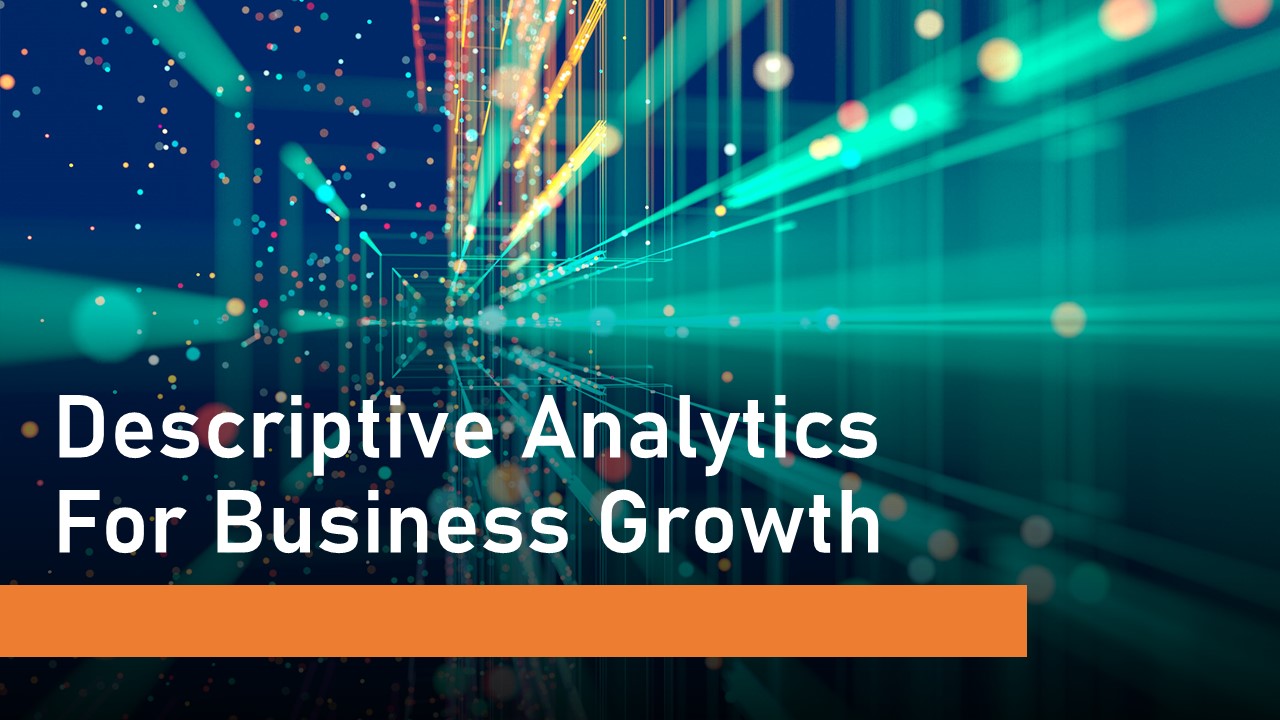Descriptive Analytics For Business Growth - PowerPoint PPT Presentation
Title:
Descriptive Analytics For Business Growth
Description:
A holistic picture of data that supports the formation of your organization's strategy and decision-making can be created by combining each type of data analysis to help you achieve certain goals. Descriptive analytics can be used independently or as a base for the other three forms of analytics. Descriptive analytics is a simple and rewarding place to start if you're new to the topic of business analytics. For More: – PowerPoint PPT presentation
Number of Views:13
Title: Descriptive Analytics For Business Growth
1
Descriptive Analytics For Business Growth
2
What Is Descriptive Analytics
- The most popular and essential type of analytics
used by businesses is descriptive analytics.
Descriptive analytics can be used by every
department of the company to track trends and
operational success. - By finding patterns and trends in huge amounts of
data, business analytics helps organizations in
making better decisions and enhancing
performance. The KPIs and measurements used in
business reports and dashboards are created using
descriptive analytics. - Using both current and old data, descriptive
analytics finds out patterns and connections.
Because it only describes trends and
relationships without going any further, it is
frequently referred to as the most basic form of
data analysis. - Using descriptive analytics, businesses can
better understand what has occurred so far by
describing and highlighting patterns in both
historical and current data. - When describing change over time, descriptive
analytics is especially helpful. It uses patterns
as a starting point for additional analysis to
inform decision-making.
3
How Is Descriptive Analytics Used
- Although it helps to think of descriptive
statistics as the first step in a longer process,
data analysts can use them to describe pretty
much any form of data. This is because even if
descriptive statistics might identify trends or
patterns, they won't dig farther. Descriptive
analytics, however, is incredibly helpful for
exposing yourself to new data. - Descriptive analytics can be used to summarize
the following types of data - Financial records
- Surveys
- Social media engagement
- Website traffic
- Scientific findings
- Weather reports
- Traffic data
4
Benefits Of Descriptive Analytics
- Even though it is one of the most basic
analytical strategies, descriptive analytics has
several benefits - We can present the data visually with descriptive
analysis. Visual data presentation makes
information much simpler to comprehend. - Explains normally complex information in a way
that is simple to understand. - Provide a precise measurement of the frequency of
important data points. Is cheap and simply needs
basic mathematical knowledge to complete. - Is easier to do, especially with the help of
programs like MS Excel or Python. - Relies on data that businesses already have
access to, therefore more data is not required. - It is far more accurate than statistical analysis
since it considers the entire population (instead
of just a small sample of data).
5
Key Takeaways
- The most basic type of data analysis, descriptive
analytics, includes describing the key elements
and traits of a data set. - Statistical measures of distribution, central
tendency, and variability are used in descriptive
analytics. - In addition to financial accounts, surveys,
online traffic, and scientific data are all
covered in this review of various data kinds. - One major benefit of descriptive analytics is
that it just needs rudimentary arithmetic
abilities and enables you to display otherwise
complex data in a way that is simple to
understand. - Descriptive analytics' primary drawback is that
it merely summaries data it doesn't make
inferences or test hypotheses. - We can measure things like social media
participation, content curation, and learner
outcomes using descriptive analytics.
6
Thank You
For more Visit https//www.indiumsoftware.com/dat
a-analytics/ Inquiries info_at_indiumsoftware.com
Toll-free 1(888) 207 5969































